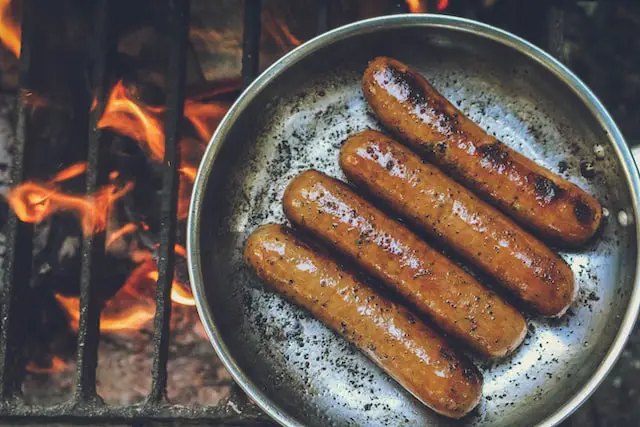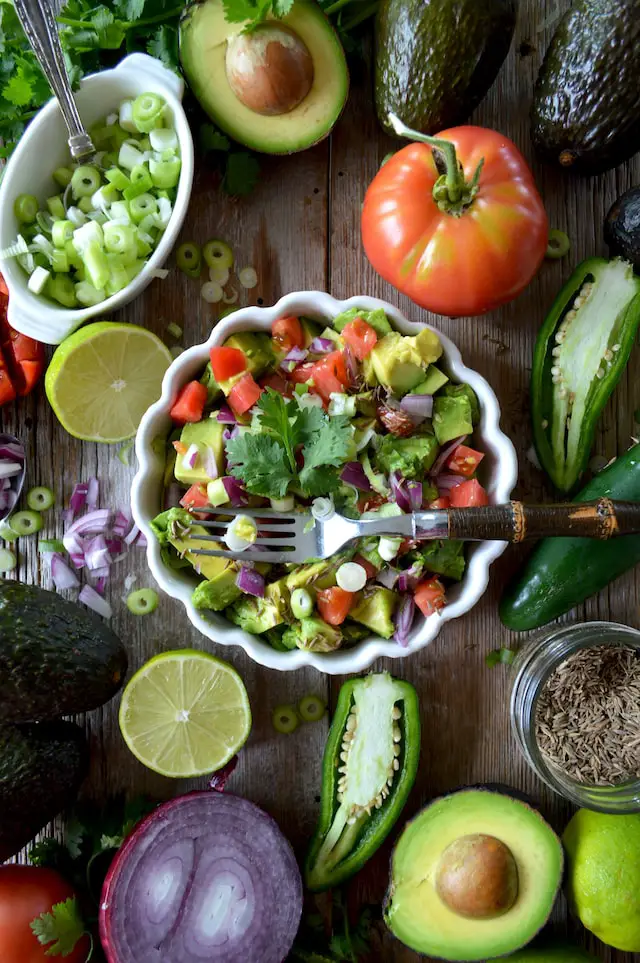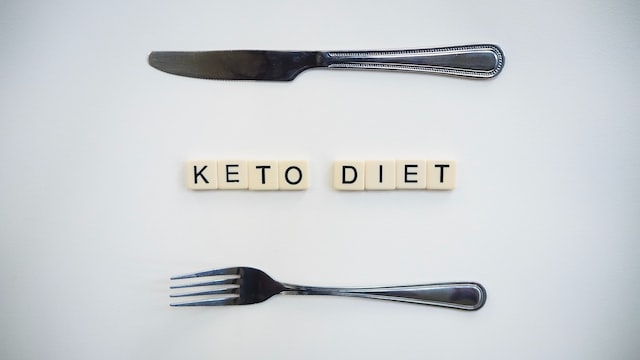Dirty keto typically involves eating a lot of processed and unhealthy foods, while clean keto focuses on whole, unprocessed foods. Dirty keto may also lead to nutrient deficiencies, as it can be difficult to get all the nutrients you need from processed foods. Clean keto is a healthier option overall, as it helps you to maintain a balanced diet and ensures that you’re getting all the nutrients your body needs.
What is dirty keto?
(Photo by Rachel Clark on Unsplash )

The “dirty” in dirty keto comes from the fact that this way of eating relaxes some of the restrictions of traditional keto. For example, with dirty keto you might:
- Enjoy processed meats like bacon and sausage
- Indulge in high-fat dairy products like cheese and heavy cream
- Eat fried foods
- Use artificial sweeteners
Dirty keto still limits your carb intake, but the focus is on getting most of your calories from fat. This can make dirty keto a bit easier to follow than strict keto, but it also comes with some risks.
Because dirty keto dieters are consuming more saturated fat and sodium, they may be at increased risk for heart disease and other chronic health conditions. If you’re considering trying dirty keto, talk to your doctor first to make sure it’s safe for you.
What is clean keto?
(Photo by Nadine Primeau on Unsplash )

Clean keto is a version of the popular ketogenic diet that focuses on consuming whole, nutrient-dense foods while minimizing processed and refined foods. It emphasizes high-quality sources of protein, healthy fats, and low-carbohydrate vegetables.
The ketogenic diet is a high-fat, moderate-protein, and low-carbohydrate diet that forces the body to burn fat for fuel instead of carbohydrates. This metabolic state is called ketosis and can have several potential health benefits, including weight loss, improved blood sugar control, and reduced inflammation.
Clean keto takes the principles of the standard ketogenic diet and adds a focus on whole, unprocessed foods. This means avoiding processed meats, refined oils, artificial sweeteners, and other highly processed foods. Instead, clean keto emphasizes whole foods such as grass-fed meats, wild-caught fish, organic vegetables, nuts, seeds, and healthy fats like avocado, olive oil, and coconut oil.
In addition to following a clean keto diet, many proponents also emphasize the importance of mindful eating, stress management, and regular exercise for overall health and wellness.
While the clean keto diet may offer several potential health benefits, it is important to note that it may not be suitable for everyone. Individuals with certain medical conditions, such as liver or pancreatic disease, may need to avoid a high-fat diet. It is also important to work with a healthcare professional or registered dietitian to ensure that nutrient needs are being met and to monitor any potential side effects or interactions with medications.
The difference between dirty keto and clean keto
Dirty keto and clean keto are two approaches to the popular ketogenic diet. Dirty keto allows for more processed and refined foods as long as they fit within the macronutrient ratios of the diet, while clean keto emphasizes whole, nutrient-dense foods and minimizes processed and refined foods. Clean keto may be more restrictive in food choices but may be more sustainable over time, while dirty keto may be easier to follow but may lead to potential health risks due to its emphasis on processed and refined foods. It is important to choose the approach that best aligns with your individual goals and lifestyle.
The pros and cons of dirty keto
Dirty keto is a version of the popular ketogenic diet that focuses on consuming high amounts of fat, moderate protein, and low amounts of carbohydrates. However, it differs from clean keto in that it allows for more processed and refined foods, as long as they fit within the macronutrient ratios of the diet. Here are some potential pros and cons of dirty keto:
Pros:
- Simplified approach: Dirty keto may be easier to follow for some people who don’t have access to or don’t want to consume whole, unprocessed foods.
- More flexibility: Dirty keto allows for more flexibility in food choices, which can be helpful for those who enjoy eating out or have limited options for cooking at home.
- Still achieves ketosis: Because dirty keto still follows the basic principles of the ketogenic diet, it can still lead to ketosis and potential health benefits, such as weight loss and improved blood sugar control.
Cons:
- Nutrient deficiencies: Consuming a diet high in processed and refined foods may result in nutrient deficiencies, such as vitamins, minerals, and fiber.
- Health risks: Dirty keto may increase the risk of heart disease, due to the high intake of saturated and trans fats commonly found in processed and fried foods.
- Inflammation: Consuming a diet high in processed and refined foods may also increase inflammation in the body, which can lead to chronic disease over time.
- Unsustainability: Dirty keto may not be a sustainable long-term approach to eating, as it may lead to feelings of deprivation or lack of variety in food choices.
While dirty keto may offer some benefits for those who find clean keto too restrictive, it is important to consider the potential risks and drawbacks of consuming a diet high in processed and refined foods. It is recommended to focus on consuming a variety of whole, nutrient-dense foods to support overall health and well-being.
The pros and cons of clean keto
Clean keto is a version of the popular ketogenic diet that focuses on consuming whole, nutrient-dense foods while minimizing processed and refined foods. Here are some potential pros and cons of clean keto:
Pros:
- Nutrient-dense: Clean keto emphasizes whole, nutrient-dense foods that provide essential vitamins, minerals, and fiber that may be lacking in a more processed diet.
- Health benefits: Following a clean keto diet may help with weight loss, improved blood sugar control, and reduced inflammation.
- Sustainable: Because clean keto focuses on whole foods, it can be a more sustainable long-term approach to eating that is easier to maintain over time.
- Improved gut health: Consuming a diet high in fiber from vegetables, nuts, and seeds can promote a healthy gut microbiome and improve digestion.
Cons:
- Restrictive: Clean keto may be too restrictive for some individuals, as it requires avoiding many common foods such as grains, legumes, and fruits.
- Cost: Consuming whole, high-quality foods can be more expensive than a more processed diet, which may be a barrier for some individuals.
- Difficult to follow: Clean keto may be difficult to follow for individuals who don’t have access to or don’t enjoy cooking, as it requires more meal planning and preparation.
- Limited food choices: Clean keto may limit food choices for individuals with certain dietary restrictions or preferences, such as vegan or vegetarian diets.
Is Dirty keto effective for weight loss?
Dirty keto may be effective for weight loss in the short term, as it emphasizes consuming high amounts of fat and low amounts of carbohydrates, which can lead to a state of ketosis and weight loss. However, the emphasis on processed and refined foods in dirty keto may lead to potential health risks, such as nutrient deficiencies and increased inflammation, which can impact long-term weight loss and overall health. Additionally, relying on processed and refined foods may make it harder to sustain the diet over time, which can lead to weight regain. Overall, while dirty keto may lead to initial weight loss, it is important to consider the potential risks and benefits and to choose an approach that is sustainable and promotes overall health.
What is the healthiest keto?
The keto diet is a low-carb, high-fat diet that has become increasingly popular in recent years. There are two main types of keto diet: dirty keto and clean keto.
Dirty keto is the more relaxed version of the diet, where you don’t worry about counting calories or macros. This approach can be helpful if you’re trying to lose weight quickly, but it’s not as sustainable or healthy in the long term.
Clean keto is a more structured approach to the diet, where you focus on eating whole, minimally processed foods. This approach is more sustainable and healthier in the long term, but it can take longer to see results.
So, which is the healthiest keto diet? While there is no definitive answer, we believe that clean keto is the better option for most people. It’s more sustainable and nutritious, and it can lead to better health outcomes in the long term.
How long should I stay on keto diet?
It is generally recommended that people follow a keto diet for at least 3 months before reassessing their situation. For people who are looking to lose weight, staying on a keto diet for an extended period of time may be necessary in order to see results. On the other hand, people who are simply trying to improve their overall health may find that a shorter stint on the diet is all that is needed. Ultimately, it is important to talk to your doctor before making any decisions about starting or stopping a keto diet.
What are the biggest keto mistakes?
One of the biggest mistakes people make when starting a keto diet is not being prepared. This means not having the right keto foods in your kitchen and not knowing what you can and cannot eat on this diet. This can lead to frustration and giving up on the diet altogether.
Another big mistake is not staying hydrated. When you are cutting carbs out of your diet, your body needs more water than usual to function properly. If you don’t drink enough water, you will experience headaches, fatigue, and other symptoms of dehydration.
Finally, another common mistake is not getting enough fat in your diet. Fat is essential for the keto diet and helps you feel satiated and satisfied after meals. Without enough fat, you may find yourself feeling hungry all the time or experiencing cravings for unhealthy foods.
Featured Image By – Photo by Total Shape on Unsplash








